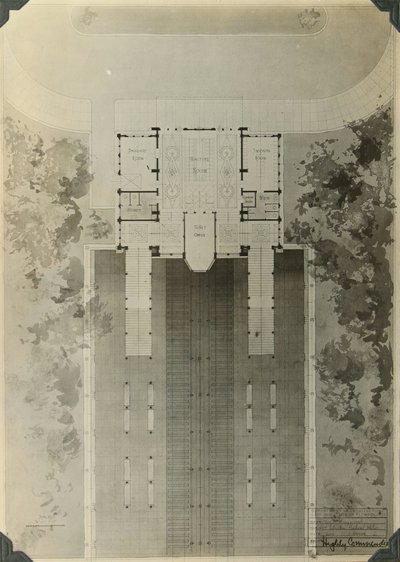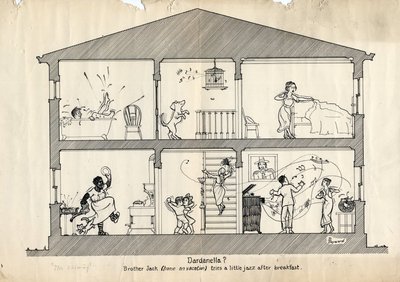After recommitting to architecture, Roger seems to have embraced life at MIT with even more vigor. He took evening sculpting classes, an activity that he enjoyed for roughly four years during his time at and around MIT, and began making masks, as well as a costume for the Copley Society Artist’s Ball in Boston. However, he was also faced with a varied array of difficulties early in the year. He began to find that, after a day of drawing, his eyes wouldn’t easily shift focus from far to near, as when he looked from a sketch pad into the distance. He went in to be fitted for glasses around 1919, where a small amount of stigmatism was detected that required about two diopters of power to aid his vision. The new glasses had a very interesting effect on Hayward’s visual perception that he would remember for the rest of his life:
“There was a three-dimensional distortion such that when I was seated in a street car the straps which hung near me seemed to be hanging toward me as though I attracted them. When I carried a tray of food in a lunch room, I spilled coffee on the far side of the tray. The whole perspective was distorted. The addition of perhaps two diopters of power brought the world closer so that when I walked down the street I worried that I might bark my knuckles on the curbstones. I seemed to be walking in a trench that was about knee deep.”
In 1920 the character of Roger’s sketchbooks began to change, becoming both more graphical and mechanical in nature. Schematic diagrams fill many of the pages, and the habit of drawing common objects was resumed, with the addition of scales and descriptive labeling. Around March of 1920, Roger seemed to “have rather overdone things and landed in Boothby Hospital, a small private hospital in Boston, with a strep infection.” Roger was sent home to regain his strength and then brought back to Boothby Hospital to have his appendix removed. A few months later he underwent a tonsillectomy. Since the academic year was for the most part ruined for him, Roger spent the rest of it working in an architect’s office, resuming his studies again in 1921.

An architectural schematic, aerial view, by Roger Hayward titled "Suburban Railroad Station," 1919. More images here

